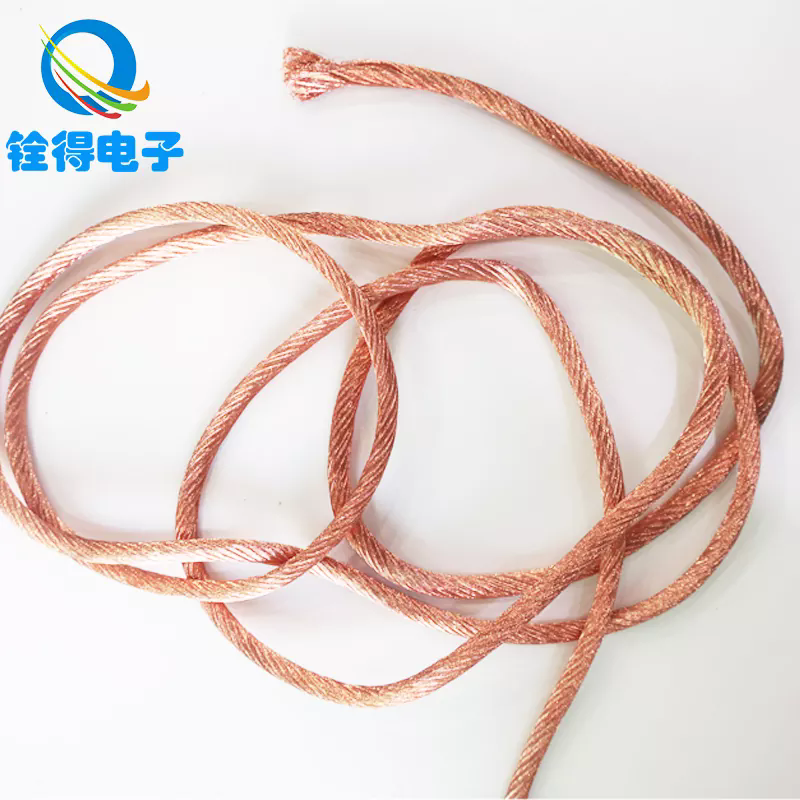What is Bare Copper Strand Wire ?
2025-08-26
Bare copper strand wire is one of the most widely used conductors in the electrical and electronics industries due to its superior conductivity, flexibility, and durability. Whether you are working on residential wiring, grounding systems, power transmission, or industrial automation, choosing the right bare copper strand wire is essential for safety, efficiency, and long-term reliability.
Understanding Bare Copper Strand Wire
Bare copper strand wire is a type of conductor made by twisting multiple copper wires together to form a flexible and robust cable. Unlike tinned or coated wires, it has no insulation or surface treatment, making it ideal for applications where excellent conductivity and easy termination are required. Copper’s high electrical conductivity and corrosion resistance make it the preferred material in modern electrical systems.
Key Characteristics
-
Excellent Conductivity: Copper provides one of the highest levels of electrical conductivity, minimizing power loss.
-
High Flexibility: The stranded structure makes it more flexible compared to solid copper wires, allowing for easier installation.
-
Durable and Corrosion Resistant: Bare copper naturally resists oxidation and performs reliably in various environments.
-
Multiple Stranding Options: Available in different strand counts and gauges to meet specific project needs.
-
Eco-Friendly and Recyclable: 100% recyclable without losing performance quality.
Applications of Bare Copper Strand Wire
Bare copper strand wire is widely used across multiple industries due to its versatility and reliability. Below are the most common applications:
-
Electrical Power Transmission
Used in overhead power lines and grounding systems for stable current flow. -
Residential and Commercial Wiring
Essential for house wiring, grounding rods, and circuit protection. -
Automotive Industry
Used for grounding, battery cables, and electrical harnesses. -
Renewable Energy Systems
Integral in solar panel grounding and wind turbine connections. -
Telecommunications
Used in signal transmission and grounding infrastructure. -
Industrial Equipment
Applied in automation systems, control panels, and power distribution units.
The adaptability of bare copper strand wire makes it indispensable in both high-voltage and low-voltage environments.
Product Specifications and Technical Parameters
Choosing the correct specifications is critical to ensure safety, performance, and compliance with international standards. Below is a detailed table showcasing the typical specifications of our bare copper strand wire:
| Parameter | Specification |
|---|---|
| Conductor Material | 99.99% Pure Annealed Bare Copper |
| Wire Gauge (AWG) | 4 AWG to 36 AWG |
| Stranding Options | 7, 19, 37, or Custom Strand Configurations |
| Cross-Sectional Area | 0.2 mm² – 500 mm² |
| Tensile Strength | ≥ 220 MPa |
| Electrical Conductivity | ≥ 101% IACS |
| Temperature Rating | Up to 105°C |
| Compliance Standards | ASTM B8, IEC 60228, RoHS, UL, ISO9001 |
| Packaging | Spools, Coils, or Customized Packaging |
| Surface Finish | Smooth, Oxidation-Free Finish |
Our bare copper strand wire is manufactured using advanced drawing and stranding techniques to ensure uniform quality and long-term durability. The high-purity copper ensures minimal signal loss and efficient power transmission.
How to Choose the Right Bare Copper Strand Wire
Selecting the correct type of bare copper strand wire depends on several critical factors, including the application environment, electrical load, and installation requirements.
Determine the Application
If you are grounding electrical systems, opt for thicker gauges with fewer strands for strength. For flexible applications, choose higher strand counts.
Select the Right Gauge
American Wire Gauge (AWG) defines the wire diameter and current-carrying capacity. Thicker wires (lower AWG numbers) can handle higher currents, while thinner wires (higher AWG numbers) are better for delicate electronic circuits.
Consider Stranding Options
-
7-Strand: Ideal for semi-flexible installations.
-
19-Strand: Balances flexibility and strength for most common uses.
-
37-Strand: Best for applications requiring maximum flexibility.
Check Compliance and Safety Standards
Always ensure the wire meets industry certifications such as ASTM, IEC, or UL to guarantee reliability and safety.
Choose a Trusted Supplier
Selecting a reputable manufacturer ensures consistent quality, competitive pricing, and reliable delivery.
Bare Copper Strand Wire FAQs
Q1. What is the difference between solid and stranded bare copper wire?
A: Solid bare copper wire consists of a single conductor, making it more rigid and suitable for fixed installations. Stranded bare copper wire, on the other hand, is made by twisting multiple smaller copper wires together. This structure enhances flexibility, making it ideal for applications that require frequent movement or bending.
Q2. How do I calculate the correct wire size for my project?
A: The correct wire size depends on three main factors: current load, voltage drop, and installation conditions. Start by determining the maximum current your circuit will carry. Then, refer to standard AWG charts to select a wire gauge that safely supports the load. For long-distance installations, account for voltage drop by choosing a thicker gauge to ensure efficiency.
Why Choose Quande as Your Bare Copper Strand Wire Supplier
When selecting a bare copper strand wire supplier, quality, consistency, and customer support matter. Quande has established itself as a trusted global supplier by combining advanced manufacturing processes with strict quality control. Our products adhere to ASTM, IEC, and UL standards, ensuring maximum performance and safety across all applications.
With decades of experience and a reputation for reliability, we provide tailored solutions for various industries, including energy, telecommunications, automotive, and electronics. Whether you need bulk quantities or customized configurations, Quande delivers top-tier products with exceptional service.
Contact Us
If you are looking for premium bare copper strand wire for your next project, Quande is here to support you. Explore our wide range of specifications, get expert recommendations, and secure the best pricing for your needs.
Contact us today to discuss your requirements and request a free quote.



